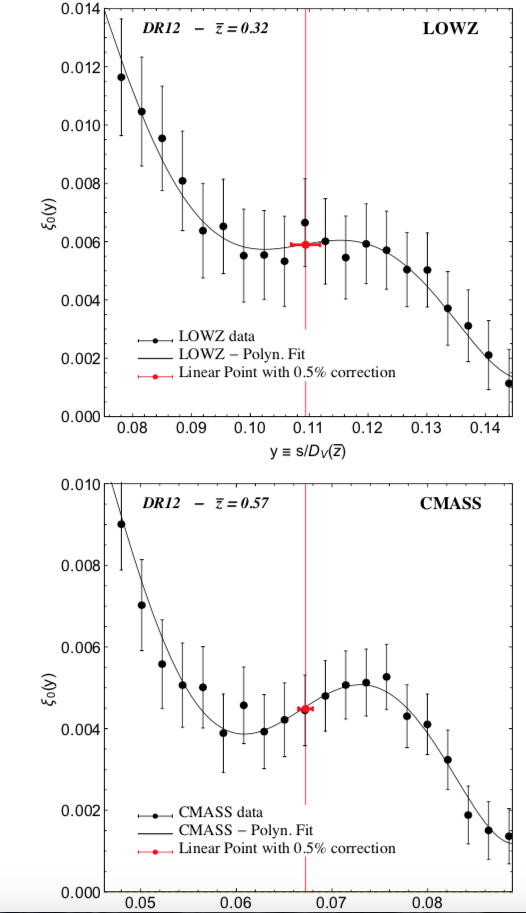A New Cosmological Ruler to track Dark Energy
In order to study the constituents of the Universe and in particular the nature of Dark Energy, which makes 70% of its content, cosmologists measure its rate of expansion through the use of a standard ruler that allows them to probe the size of the universe at different epochs. This ruler is a characteristic length scale in the peak of the two-point galaxy correlation function, dubbed the baryon acoustic oscillation (BAO) scale, which has been imprinted a the time when the ordinary matter (the baryons) have decoupled from the photons, nearly 400.000 years after the Big-Bang.
However, this scale today is perturbed by non-linear effects, which develop during the growth by gravitational instability of the cosmic structures. An international team of cosmologists, led by researcher at the Observatory of Paris, has proposed the use of an another length scale, dubbed the “linear point” as a cosmological standard ruler. Contrary to the position of the baryon acoustic peak, this scale is constant in redshift and it is not affected by non-linearities with a precision of about 0.5%.
Since the 1970s astrophysicists have sought objects of known size that can allow them to track the expansion history of the Universe. Now a French-American team has uncovered a robust new “cosmological standard ruler” they name the Linear Point embedded in the distances to and between far-off galaxies. By measuring millions of such distances, cosmologists seek to unveil the nature of the so-called Dark Energy, the mysterious fuel driving the accelerated expansion of the universe.
The traditional “sound-horizon” ruler long advocated by astrophysicists is known to have changed length slightly over the last 14 billion years or so. This has become problematic as cosmological measurements have become more precise. The conventional solution has been to try to correct for these imperfections using theoretical models. Under the leadership of Stefano Anselmi (Observatoire de Paris & Institut d'Astrophysique de Paris), a team of cosmologists composed of Glenn Starkman (Case Western Reserve University), Pier-Stefano Corasaniti (Observatoire de Paris), Ravi Sheth (University of Pennsylvania) and Idit Zehavi (Case Western Reserve University) proposed a more stable ruler, the Linear Point, that requires no corrections. By applying the Linear Point to existing galaxy catalogues, they have shown that this pristine ruler is a new promising means to unravel the mystery of Dark Energy. These results have been published on Physics Review Letters.

Caption Figure: galaxy 2-point correlation function in a-dimensional distance units for the LOWz galaxy sample with mean redshift z=0.32 and CMASS galaxy sample with mean redshift z=0.57. The red points locate the position of the Linear Point corresponding to iso-volumetric distances of DV(z=0.32) = 1264 ± 28 Mpc and Dv(z=0.57)= 2056 ± 22 Mpc.
For more information:
Click hereInformations recueillies par Laura Moscarelli





